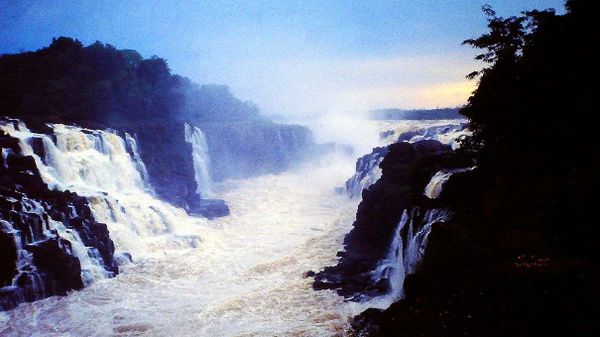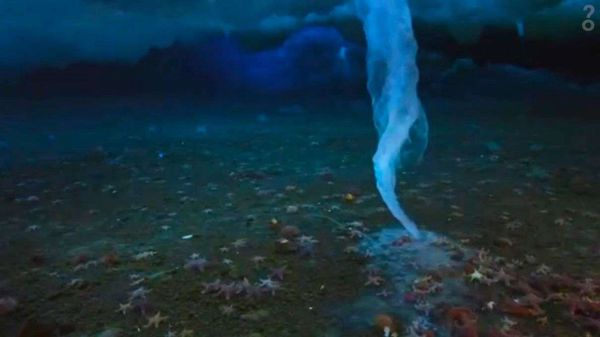
Key Takeaways
- The Denmark Strait cataract, located between Greenland and Iceland, is the world's largest waterfall, unseen under the Atlantic Ocean, plunging 11,500 feet (3,505 meters) and carrying around 175 million cubic feet (5 million cubic meters) of water per second.
- It significantly surpasses any land waterfall, with Angel Falls being three times shorter and Niagara Falls carrying 2,000 times less water.
- This underwater phenomenon is caused by the meeting of colder, denser Arctic waters from the Greenland Sea with the slightly warmer waters of the Irminger Sea.
Sorry, you can't go visit the world's tallest waterfall. There's no overlook, there will be no oooh-ing and ahhh-ing over the rainbows in the cataract spray. There are no rainbows at all, in fact, and that's because the Denmark Strait cataract is entirely underwater.
Located in the little slice of ocean between Greenland and Iceland, the gigantic waterfall known as the Denmark Strait cataract is 100 miles (160 kilometers) wide. It plunges 11,500 feet (3,505 meters) straight down from the Greenland Sea into the Irminger Sea, carrying around 175 million cubic feet (5 million cubic meters) of water per second — dwarfing any giant waterfall you could find on land. For instance, Angel Falls in Venezuela, the tallest waterfall above sea level, is three times shorter than the Denmark Strait cataract, and Niagara Falls carries 2,000 times less water, even during peak flows.
Advertisement
The most astonishing thing about the Denmark Strait cataract isn't, perhaps, how it got to be so tall and mighty, but that an undersea waterfall can exist at all. It's easy to picture an ocean as a giant bathtub that sloshes around with the tides, but seawater is actually very dynamic; waters of different temperatures and salinities — and, therefore, densities — are always interacting on large and small scales.
The Denmark Strait cataract is formed by the difference in temperature between the ultra-cold Arctic waters of the Greenland Sea meeting those of the slightly warmer Irminger Sea. Since the molecules in the cold water are less active and take up less space than in warm water, they are packed together more tightly, making colder water denser. That means that when water from the Greenland Sea meets the Irminger Sea water, it slides right down through it to the bottom of the ocean.
This animation shows how the interaction of cold and warm water beneath the sea can affect surface conditions:
Advertisement

